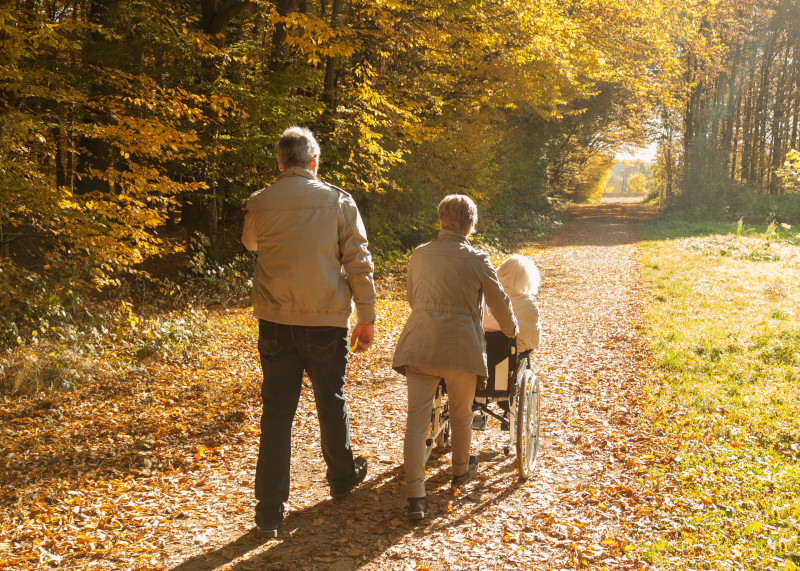AARP Hearing Center
Care Partner Training: Managing Lewy Body Dementia

Lewy Body Dementia (LBD) is the second most common type of progressive dementia, following Alzheimer's Disease (AD). It is also the most misdiagnosed form of dementia.
Julia Wood, director of professional and community education for the Lewy Body Dementia Association, provided helpful information for care partners in a program presented by Insight Memory Care, in collaboration with AARP Virginia.
Lewy Body Dementia is an umbrella term for the presence of Lewy bodies, or abnormal deposits of a protein called alpha-synuclein, in the brain, said Wood, and it is associated with Parkinson’s disease.
There is a difference between Parkinson’s dementia and LBD, however. If a patient has a Parkinson’s diagnosis and develops dementia within one year of Parkinson’s symptoms, the person has Parkinson’s dementia.
But if the patient has dementia before a Parkinson’s diagnosis, the person has Lewy Body Dementia.
Some of the differences between Alzheimer’s and LBD are that Alzheimer’s patients present with memory and language problems at the time of the diagnosis. Physical symptoms typically present at later stages.
With LBD, memory issues are spared at the beginning. The patient may have fluctuating abilities to think and have issues with problem solving, attention, and reasoning. Physical problems can present at all phases, and patients may hallucinate and have REM sleep behavior disorders.
While no treatments are currently available to stop LBD disease progression, many symptoms can be managed or reduced with medications and other therapies. The goal, said Wood, is to improve the patient’s quality of life.
Physical, occupational, and speech therapies, along with social work and counseling, are all potentially helpful interventions for LBD patients, said Wood. The symptoms all play off one another, but some symptoms are best targeted by certain interventions.
“Cognitive fluctuations,” said Wood, “are one of the most challenging aspects of LBD management.”
Common cognitive symptoms include impaired attention, executive disfunction, Bradyphrenia (slower thinking), spatial disorientation, visual misidentification, and memory changes with progression. Occupational and speech therapy can help by helping the patients address tasks in a different way.
LBD patients usually experience a decrease in visuospatial functions, and Wood recommends helping them by using contrast in their environment, such as using different colors for dishes and glasses, using colored placemats and coasters, and using colored tape or decorations to mark table or furniture edges. She also recommends minimizing clutter and ensuring the environment has adequate lighting.
Motor impairment symptoms include tremors, Bradykinesia (slower movement), rigidity, shuffling, stooped posture, and masked or blank facial expressions. Physical, occupational, and speech therapy can help with symptom management.
Sleep-related disorders include REM sleep behavior disorder, insomnia, sleep apnea, and restless leg syndrome. Occupational and physical therapy can help assure a safe sleep environment, and CPAP devices can help with apnea.
LBD patients can experience problems with autonomic symptoms, such as impotence, urinary incontinence, and constipation, which can be addressed through physical and occupational therapy.
Neuropsychiatric symptoms are probably the “hardest to manage,” said Wood. These symptoms include hallucinations, illusions and delusions, depression, anxiety, and agitation. Education and counseling for care partners can help them understand that the symptoms are in the brain and not who their loved ones really are.
While different medications can help control many of the symptoms, Wood noted that use of medications can be a “balancing act” for patients. Some medications can be harmful to some patients. Professionals advocate taking a non-pharmacological approach at first, introducing medication as needed.
Some non-drug strategies that care partners can use is to stay calm and avoid arguing; reassure the person with LBD; offer distractions, such as music or a favorite activity; promote engagement in simple tasks of interest; facilitate a consistent daily schedule; and moderate excessive environmental stimuli like light and noise.
“Regular exercise and sleep are very, very important,” said Wood.
Care partners can also help the person cope with visual hallucinations by increasing room lighting and providing auditory stimulation with activities; helping patients practice good sleep practices and maintaining a regular daytime schedule; and reassuring them that they are safe if hallucinations do occur. Also have the person checked regularly for eye conditions because poor or deteriorating eyesight can also lead to hallucinations.
Wood recommended that care partners be prepared for potential hospitalizations by having copies of the patient’s medical history and medications available. She also recommended bringing a copy of the DIAMOND Lewy Management Toolkit to assist hospital staff. If in an emergency room situation, ask the physicians to contact a physician who regularly treats LBD. Discuss the risk of severe reactions to antipsychotic medications with doctors and nurses.
For more information and resources for LBD care partners, visit the Lewy Body Dementia Association’s website.

































































